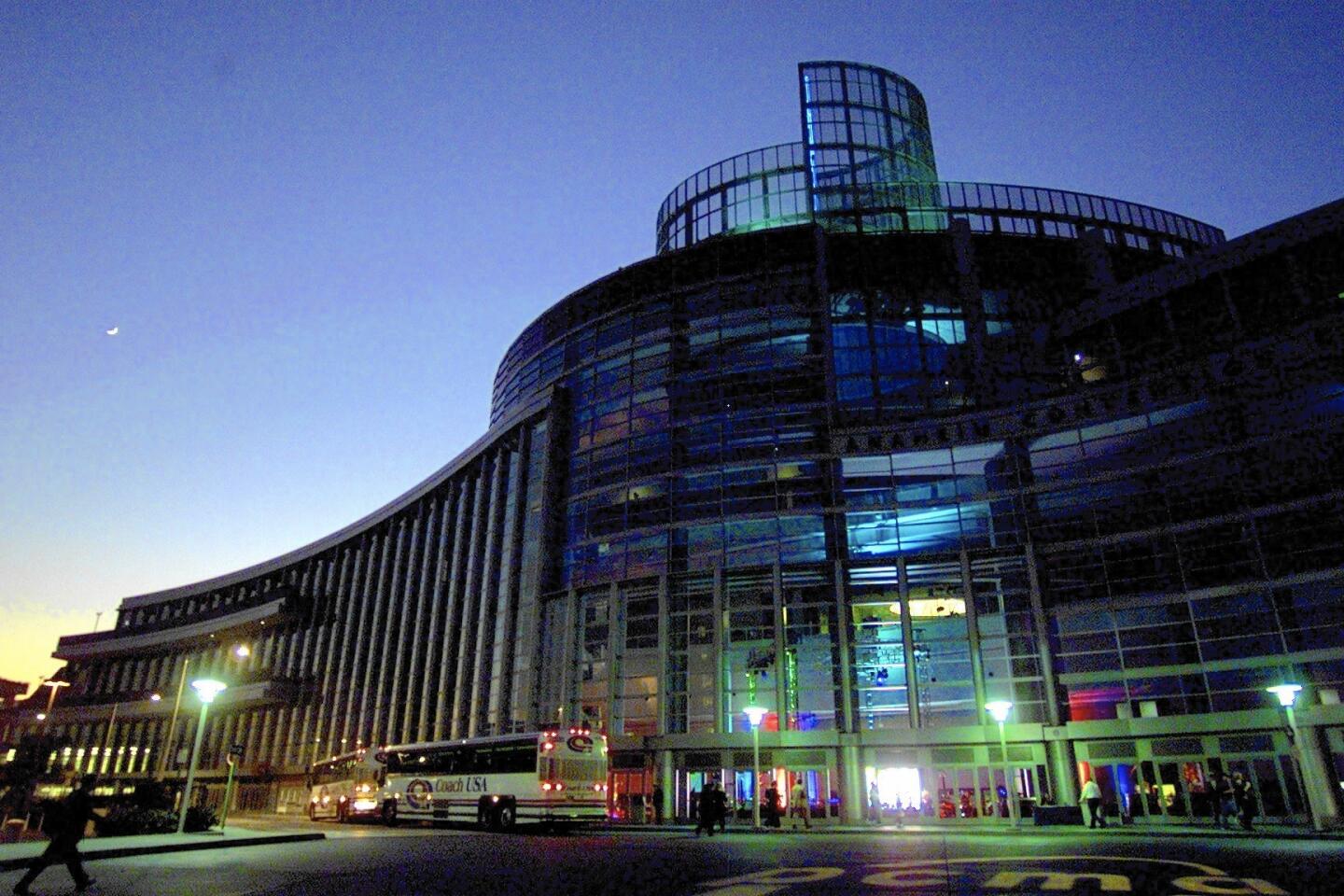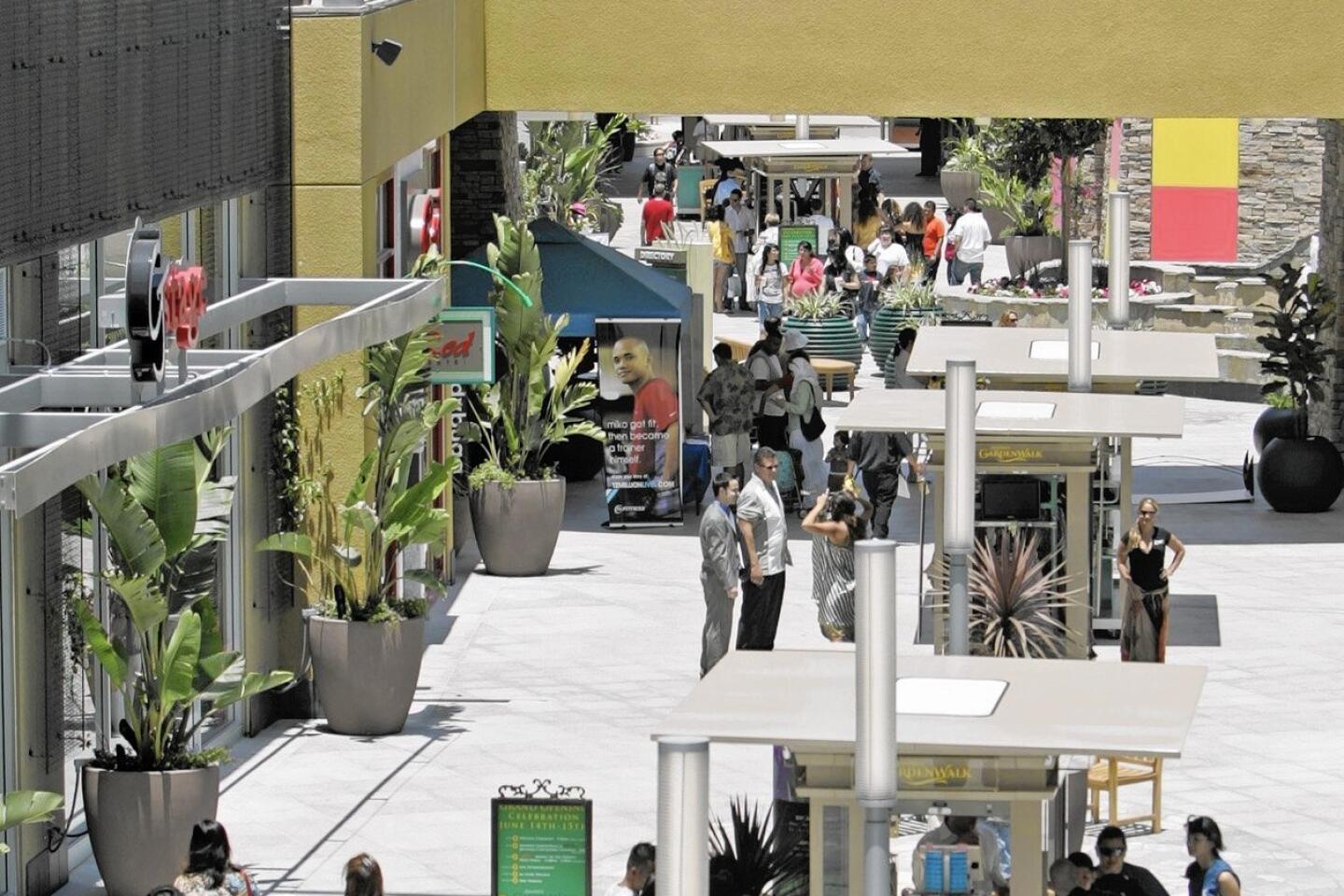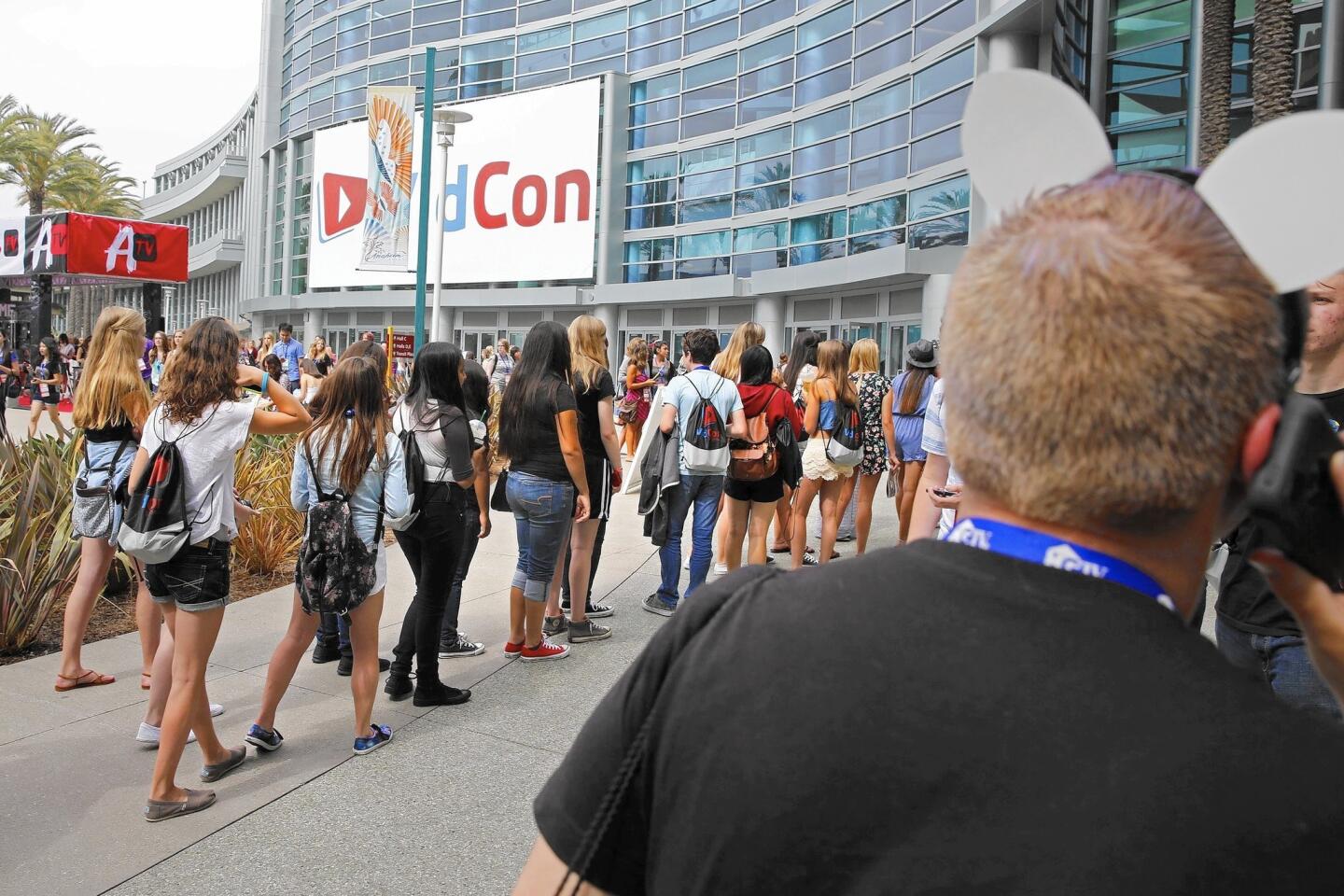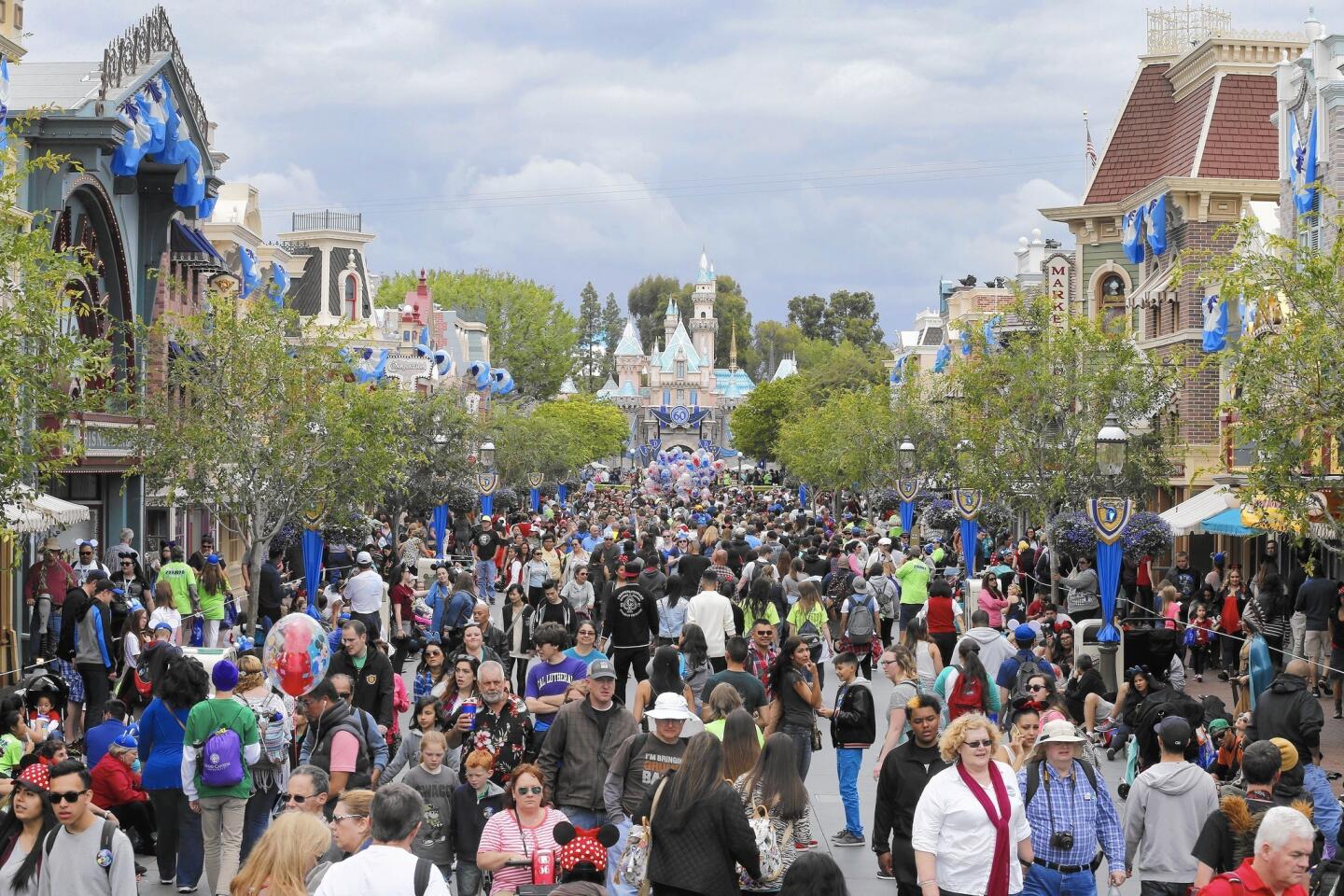If Walt could see it now: Tourism keeps growing in Disneylandâs hometown
In Anaheim, tourism is booming, as the city continues to pour resources into the ever-growing industry.
Visit Anaheim, a nonprofit organization that promotes tourism, said the city last year saw a record number of visitors, 22.5 million, a nearly 30% growth over the last five years.
These tourists, the majority of whom are domestic travelers, pumped $7.3 billion into the Orange County economy, according to Visit Anaheim, up 8% from the year before.
In addition, Anaheim, known to most people in the world as the site of Disneyland, is making moves to keep expanding its most famous industry.
Visit Anaheim is touting Alaska Airlinesâ new direct flight from Orange County to Sonoma County as a way to encourage more in-state travel, the Walt Disney Co. broke ground this month on its new Star Wars-themed amusement park, the convention center is adding 200,000 square feet of space, and the resort area is building about a dozen new hotels.
âThe tourism industry as a whole is as strong as itâs ever been,â said Jay Burress, president and chief executive of Visit Anaheim. âWeâre seeing occupancy rates move up, average daily rates move up, and demand for hotel rooms move up. Everything is pointing in the right direction.â
Tourism made this city, once a cow pasture â as much of Orange County was at one time â until Walt Disney decided to locate his dream of a different kind of amusement park in the area, shaping Anaheimâs destiny.
It may not have been anything that Walt could have imagined, but this growth in tourism has brought mixed results. The influx has increased the tax base, but traffic, crime, overcrowding, housing concerns and low-wage jobs have spread throughout the city.
When Disneyland was built in 1955, it marked a shift in Anaheim from an agriculture-based economy to one based in industry.
âSuddenly we went from all orange groves and flat agriculture to strip malls, shopping centers and schools,â said Chris Jepsen, assistant archivist with the Orange County Archives. âOrange County transformed so dramatically and profoundly in the 1950s and 1960s, so in a way Disneyland is part of that era, part of that larger picture.â
The opening of Disneyland brought with it national â and international â attention, and for the first time in the cityâs 100-year history, Anaheim became a tourist destination in its own right.
âOther than visiting friends or relatives, there really wasnât anything in Anaheim that people couldnât find in Los Angeles,â said Jane Newell, heritage services manager at the Anaheim Heritage Center. âPeople would go from Anaheim to Los Angeles for things like the theater and museums. But with Disneyland, people started coming from Los Angeles, then staying for the hotels and shops.â
âThe movement of people for recreation started going in the other direction â toward Anaheim, instead of away from Anaheim.â
With Disneyland, other nearby tourist attractions developed and expanded.
Because the theme park was originally a seasonal attraction, hotel owners began looking for other ways to fill rooms during the off-season and approached the city about a convention center, according to Newell.
The Anaheim Convention Center was built in 1967, across the street from Disneyland. After numerous expansions, it is now the largest exhibit facility on the West Coast.
Knottâs Berry Farm in the nearby city of Buena Park, meanwhile, had been open for decades before Disneyland, but got a boost from direct competition with Mickey Mouse.
According to Jepsen, Knottâs had been little more than a âglorified roadside attraction,â but after Disneyland, it opened traditional amusement park rides, such as the Timber Mountain Log Ride and the Corkscrew, the first modern-day, 360-degree inverting roller coaster. Today, Knottâs Berry Farm is the 13th-ranked amusement park in North America, with 3.6 million visitors per year, according to Themed Entertainment Associationâs 2014 index.
âI donât know if Knottâs Berry Farm would have developed to the extent that they are now if there wasnât a built-in audience for that kind of recreation,â Newell said.
*
Tourism growth isnât uniform
Disneyland is now a behemoth in its own right. It is the third-most visited theme park worldwide, after Orlandoâs Magic Kingdom and Tokyo Disneyland, with nearly 17 million visitors in 2014.
The broader area, known as Disneyland Resort, has also expanded to include California Adventure Park, the 10th-most visited theme park in the world, the Downtown Disney shopping, dining and entertainment area, and three hotels. The entire area creates an estimated $5.7 billion in economic activity each year, according to an independent study commissioned by The Walt Disney Parks and Resorts division.
Some long-time residents, like Steve Faessel â who refers to himself as âP.D.,â or âpre-Disneyâ â see the booming tourism industry as a boon to the city and the local economy.
âSay there was no Disney, no Convention Center, no Angel Stadium, no Honda Center, ARTIC or all those adjoining hotels,â Faessel, chairman of Anaheimâs budget commission, said, referring to the acronym for the Anaheim Regional Transportation Intermodal Center, or the train depot.
âWe would be a bedroom community with almost no industry and a markedly different residential and business climate.â
More than 55% of the revenues applied to the cityâs general fund come from the resort district and tourism, explained Visit Anaheimâs Burress, and this money is used to pay for communal services such as public safety, libraries, parks and city lights.
However, Disney receives a tax break from the city.
âAn increase in the dollars coming into the open fund affects what the city is able to do,â he said. âSo itâs a win-win for both the community and the tourism industry.â
But even as Anaheimâs visitor numbers soar, tourism growth has not been uniform throughout the city. While the Disneyland Resort saw its highest attendance and profits in history last year â fueled by the 60th anniversary of Disneyland â other nearby spots like the GardenWalk, a shopping and dining center near Downtown Disney, struggle to attract visitors.
Recent Yelp reviews include comments such as, âI feel like no one really comes here,â ânot even half the shops are occupied,â âdonât waste your time here,â âI have to say I was really surprised how vacant this place isâ and âoverall this place is a ghost town.â
Similarly, ARTIC, the glitzy $185-million transportation hub near Angel Stadium, has been billed as a way to spread Disneyland visitors throughout the county, but ridership numbers have fallen far short of city expectations. The transportation center was projected to serve about 10,000 riders a day but saw only 2,326 riders a day last summer, according to a city-commissioned study.
And even where Anaheim tourism has been successful, negative side effects have often spilled over to the local community.
The battle over short-term rentals in residential neighborhoods, for example, has raged for years.
*
Short-term rentals are a concern
Luisa Lam lives in Sherwood Village, a neighborhood next to the convention center and within walking distance of the Disneyland Resort, and has seen her community change dramatically over the past four years.
In a community of 221 townhouses, more than 50 have become dedicated year-round short-term rental units, creating an influx of traffic, noise, drinking, trash and safety concerns â and depreciated home values. Residents are now hesitant to use common spaces, like the pool and clubhouse, because theyâre now overwhelmed by vacationers who often flout the rules.
âOur quality of life has changed dramatically,â said Lam, whose home is now boxed in by short-term rentals. âWe didnât sign up with the premise that our community was going to become a resort. If I had known this was going to happen, I probably never would have bought my unit.â
While the city of Anaheim extended its moratorium on new short-term rentals this month, Lam, who is part of the group Families Against Short-Term Rentals, said itâs not enough.
âWe want a complete ban,â she said. âOr they can keep doing it, but in a commercial zone.â
Another problem is the low-wage jobs associated with the tourism industry. While the Disneyland Resort alone employs 28,000 people â making it the largest employer in Orange County â starting wages for âcast membersâ and hosts are close to the state minimum wage of $10 per hour.
The average annual salary in Anaheimâs leisure-hospitality sector was $23,000 in 2013, the lowest of all industries in the city and far below the average annual salary in the city of $43,167, according to the Southern California Assn. of Governments.
Orange County Communities Organized for Responsible Development addressed this issue in its 2015 report, âMore Jobs, Less Opportunity: Economic Growth in Orange County.â
âNinety-seven percent of the jobs projected to be created by tourism industries in the next ten years pay average annual salaries of less than $40,000,â the report stated. âEighty percent of tourism jobs will pay average wages of less than $26,000. A household of four depending on such a salary would qualify for every majority income-limited benefits program offered by the state of California, including food stamps.â
Yet Anaheim tourism shows no signs of slowing.
âI see us hitting that 50 million visitors mark over the next few years,â said Burress, who explained that thereâs no foreseeable limit to how many tourists the city can take in, so long as the construction of hotel rooms and attractions keeps pace.
For residents like Faessel, the costs of increased tourism are worth it.
âCall up Fullerton and see if they would trade Fullerton College for Disneyland,â he said. âI think you know what the answer would be.â
--
--
ALSO
Hansen: O.C. still lacks in the fashion department
Sign up for The Wild
Weâll help you find the best places to hike, bike and run, as well as the perfect silent spots for meditation and yoga.
You may occasionally receive promotional content from the Los Angeles Times.









